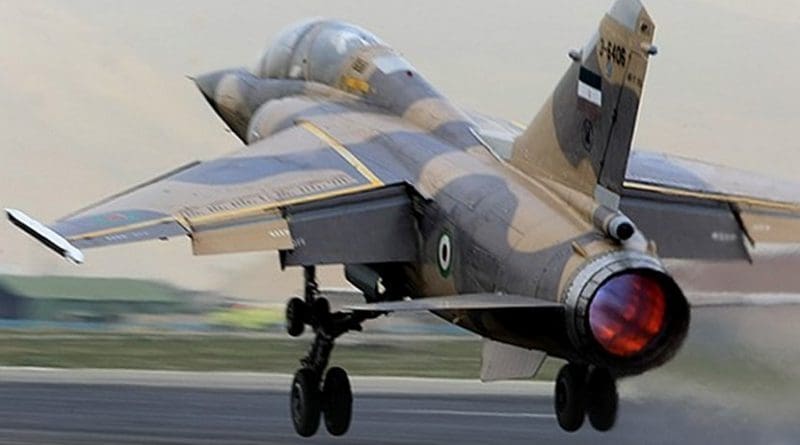Experts Cast Doubt In Iran’s Claim Of Air Power
By Arab News
Iran’s fleet of ageing warplanes took to the skies above the Arabian Gulf and the Sea of Oman on Friday in what Tehran billed as a “show of strength” to its adversaries.
The drill involved fighter jets from the Iranian military and the Islamic Revolutionary Guard Corps (IRGC), including US-made F-4, French Mirage and Russian Sukhoi-22 planes, and five logistics and combat helicopters.
Iran said the maneuvers were a warning to Iran’s enemies that they faced a quick, “stern response” and “pounding reply” in case of any ill-will.
However, experts were quick to cast doubt on whether Iran’s air power presented any genuine threat.
“This is the second exercise involving the Iranian army and the IRGC regarding scenarios for the Strait of Hormuz,” Dr. Theodore Karasik, senior adviser with Gulf State Analytics in Washington and a leading security analyst, told Arab News.
“While Tehran’s exercises show that the ‘asymmetric’ doctrine is alive and well, the role of Iran’s air assets is another question. Even if these aircraft are involved in an exercise, in an actual confrontation they would be picked off quite easily because Iran simply doesn’t have a viable air force.”
Iran attracted widespread international ridicule in August when it unveiled what it said was its first domestically designed and manufactured fighter jet. The Kowsar was said to be a “fourth-generation” warplane with advanced avionics, radar and fire-control systems, to be used for short aerial support.
The launch was attended by President Hassan Rouhani, who was photographed in the cockpit. However, aviation experts quickly pointed out that the new jet was in fact a slightly modified Northrop F-5, designed in the 1950s and used by US forces since the 1960s.
A more serious threat to regional security and stability takes place on Saturday, when Iran will stage a naval military drill in the Gulf, involving about 600 naval vessels.
“Their naval capabilities are much better than their air force,” Karasik said. “Their scenario practice involves asymmetric naval strikes with speed boats, and also the laying of mines.”
Tehran has suggested in recent weeks that it could take military action in the Gulf to block other countries’ oil exports in retaliation for US sanctions intended to halt its sales of crude, which begin on Nov.4.
Washington maintains a fleet in the Gulf that protects oil shipping routes, and has pledged that the flow of oil will not be interrupted.
Tehran has been under increasing pressure since May, when President Donald Trump pulled America out of the 2015 nuclear deal between Iran and world powers. US allies in Asia are already cutting back on their purchases of Iranian crude.
In July, Rouhani said that if renewed sanctions threatened Iran’s crude oil exports, the rest of the Middle East’s exports would be threatened as well.

